Created 1907–1908 | Dimensions 1.8 m x 1.8 m | |
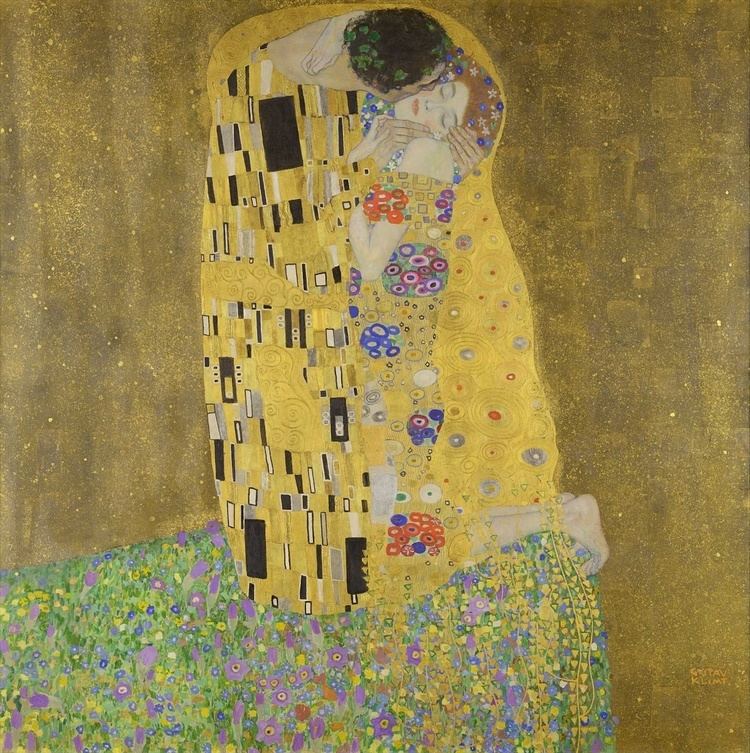 | ||
Location Österreichische Galerie Belvedere Similar Gustav Klimt artwork, Art Nouveau artwork, Oil paintings | ||
The Kiss (Lovers) was painted by the Austrian Symbolist painter Gustav Klimt between 1907 and 1908, the highpoint of his "Golden Period", when he painted a number of works in a similar gilded style. A perfect square, the canvas depicts a couple embracing, their bodies entwined in elaborate robes decorated in a style influenced by both linear constructs of the contemporary Art Nouveau style and the organic forms of the earlier Arts and Crafts movement. The work is composed of oil paint with applied layers of gold leaf, an aspect that gives it its strikingly modern, yet evocative appearance. The painting is now in the Österreichische Galerie Belvedere museum in the Belvedere palace, Vienna, and is widely considered a masterpiece of the early modern period. It is a symbol of Vienna Jugendstil—Viennese Art Nouveau—and is considered Klimt's most popular work.
Contents
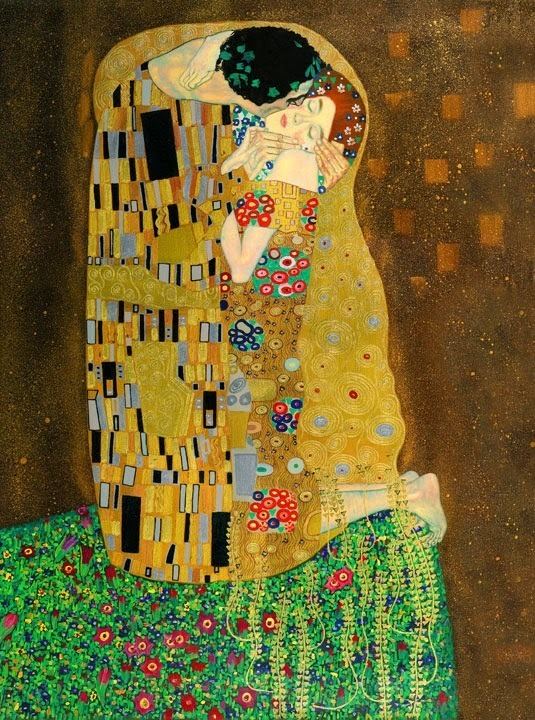
Background
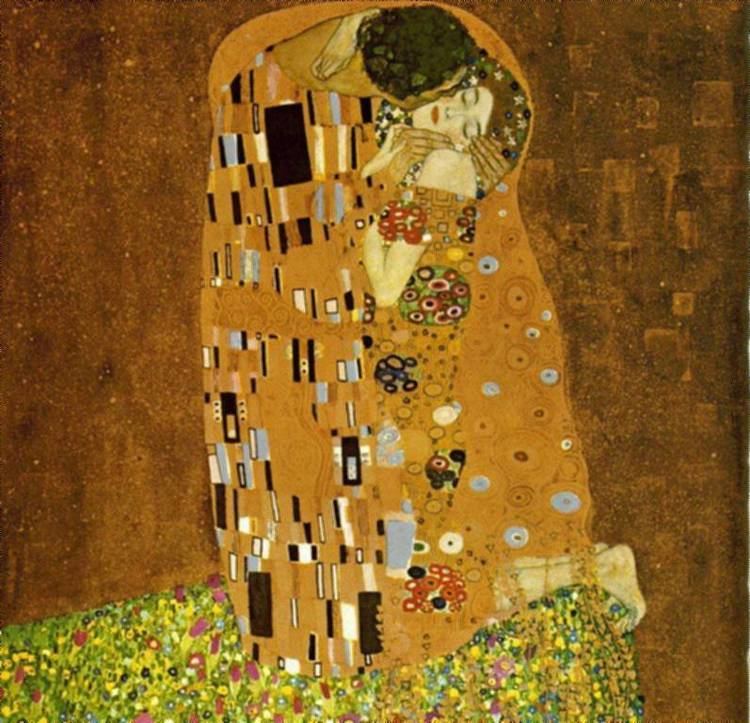
It was painted soon after his three-part Vienna Ceiling series which created a scandal and were criticized as both 'pornography' and evidence of 'perverted excess'. The works had recast the artist as an enfant terrible for his anti-authoritarian and anti-popularist views on art. He wrote, "If you can not please everyone with your deeds and your art, please a few". By contrast, The Kiss was enthusiastically received, and immediately found a buyer.
Description
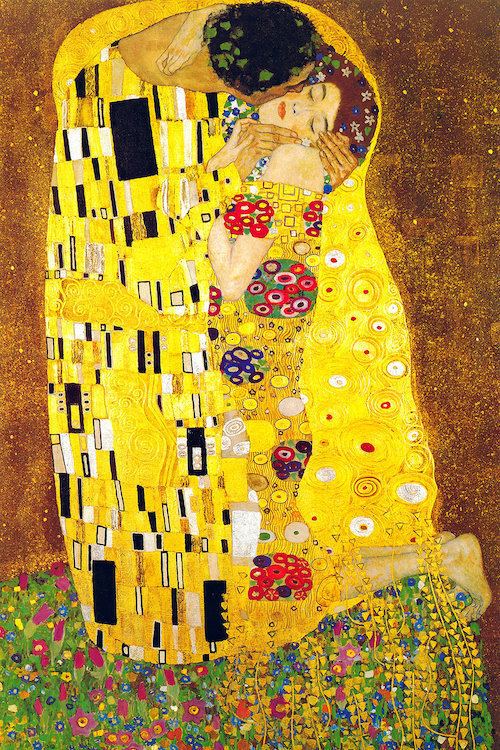
Klimt depicts the couple locked in intimacy, while the rest of the painting dissolves into shimmering, extravagant flat pattern. The patterning suggests the style of Art Nouveau and the organic forms of the Arts and Crafts movement. At the same time the background evokes the conflict between two- and three-dimensionality intrinsic to the work of Degas and other modernists. Paintings such as The Kiss were visual manifestations of fin-de-siecle spirit because they capture a decadence conveyed by opulent and sensuous images. The use of gold leaf recalls medieval "gold-ground" paintings and illuminated manuscripts, and earlier mosaics, and the spiral patterns in the clothes recall Bronze Age art and the decorative tendrils seen in Western art since before classical times. The man's head ends very close to the top of the canvas, a departure from traditional Western canons that reflects the influence of Japanese prints, as does the very simplified composition. The two figures are situated at the edge of a patch of flowery meadow. The man wears a robe with black and white rectangles irregularly placed on gold leaf decorated with spirals. He wears a crown of vines while the woman is shown in a tight-fitting dress with flower-like round or oval motifs on a background of parallel wavy lines. Her hair is sprinkled with flowers and is worn in a fashionable upsweep; it forms a halo-like circle that highlights her face, and is continued under her chin by what seems to be a necklace of flowers. Similarly juxtaposed couples appear in both Klimt’s Beethoven Frieze and Stoclet Frieze.
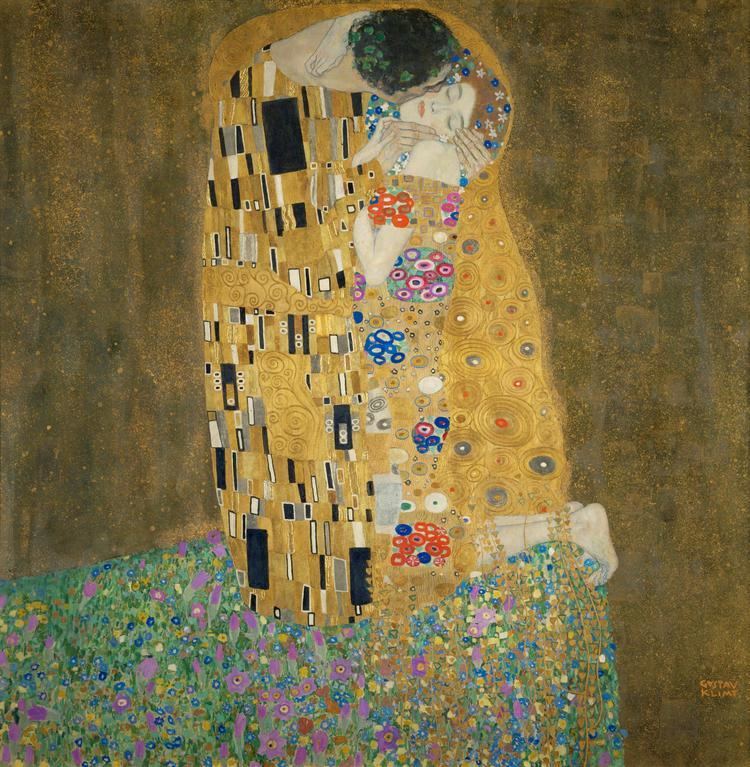
It is thought that Klimt and his companion Emilie Flöge modeled for the work. but there is no evidence or record to prove this. Others suggest the female was the model known as 'Red Hilda'; she bears strong resemblance to the model in his Woman with feather boa, Goldfish and Danaë. Klimt's use of gold was inspired by a trip he had made to Italy in 1903. When he visited Ravenna he saw the Byzantine mosaics in the Church of San Vitale. For Klimt the flatness of the mosaics and their lack of perspective and depth only enhanced their golden brilliance, and he started to make unprecedented use of gold and silver leaf in his own work.
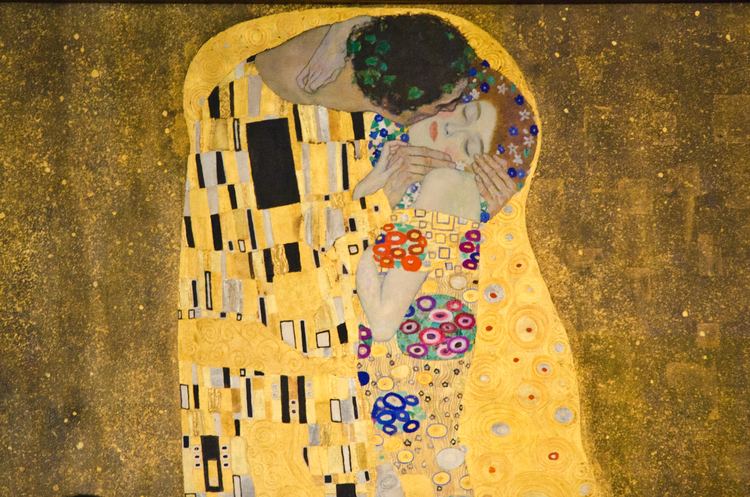
It has also been argued that in this picture Klimt represented the moment Apollo kisses Daphne, following the metamorphosis of Ovid narrative.
Homage
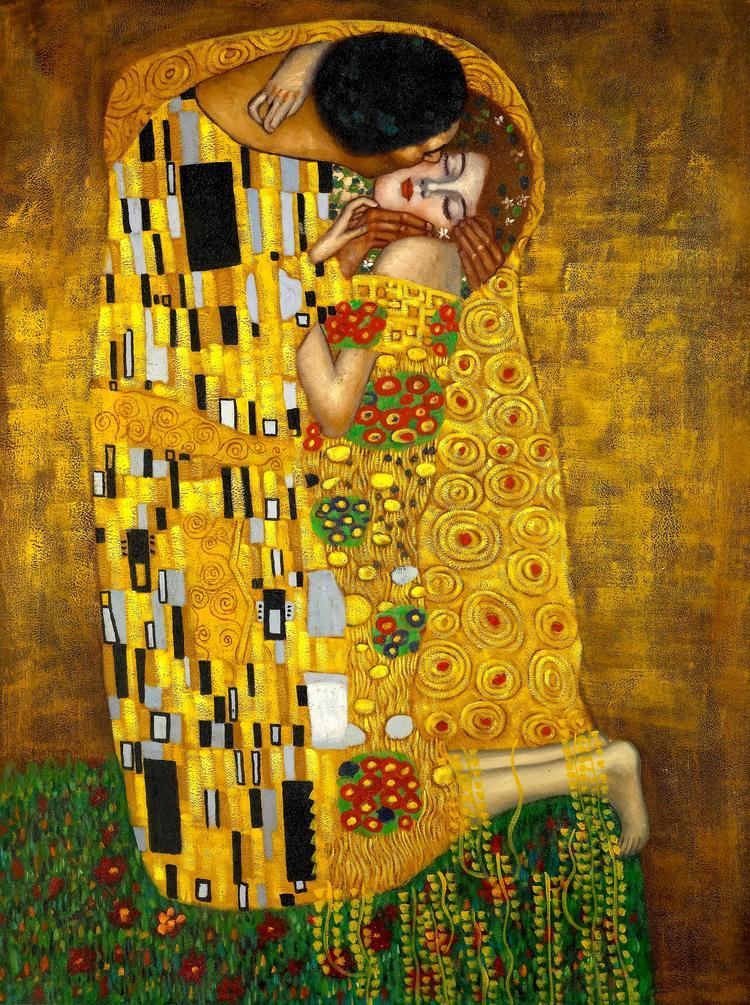
In February 2013 Syrian artist Tammam Azzam superimposed an image of the painting onto a bombed building in an unidentified part of Syria, in a work called Freedom Graffiti, to call attention to the plight of war in his country.
